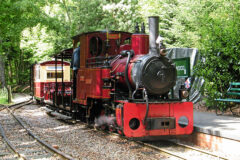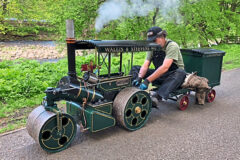Fantastically original 1956 Land Rover Station Wagon
Posted by Chris Graham on 18th March 2023
Zack Stiling reflects on the Land-Rover’s 75th anniversary, and admires Mike Rivett’s superbly original 1956 Station Wagon.
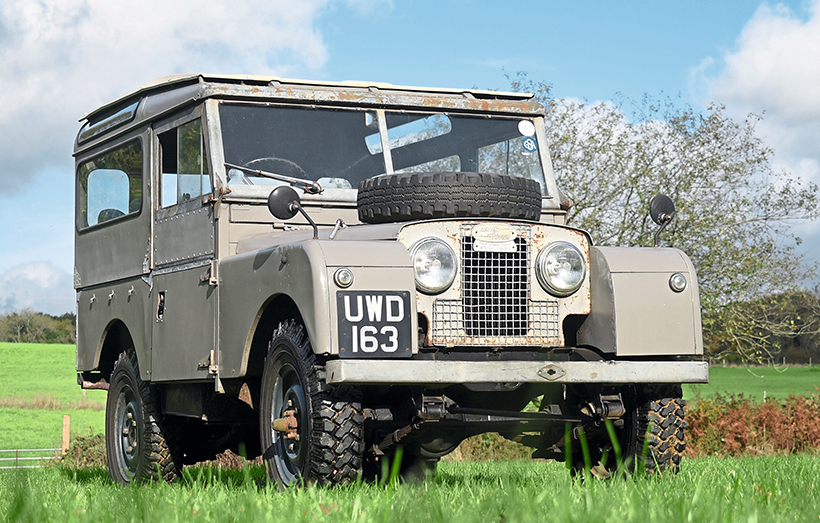
The Land-Rover looks most at home in this rural smallholding.
What do botanical survey teams, tsetse fly control and the late Queen Elizabeth have in common? The answer is the Land-Rover, which was nothing if not adaptable. It wasn’t necessarily an innovative vehicle – four-wheel drive had been used on a Scottish steam carriage as early as 1825 – but its continued success lay in the fact that, like the Willys Jeep of 1941, it was small and quick enough to fulfil most of the functions desired of a passenger vehicle, rugged enough for all manner of off-road applications, and simple enough to be built en masse and sold very cheaply.
The Jeep had impressed a lot of people, but perhaps none more so than brothers Spencer and Maurice Wilks, managing director and head of engineering respectively at the Rover Company in Solihull. Rover had purchased a couple of war-surplus Jeeps to study, and Maurice the engineer particularly admired it, although he felt there was scope for improvement.

With plenty of ground clearance, it takes rough country in its stride. With exceptions, Series Is were typically finished in green, blue or battleship grey.
He duly cobbled together a prototype using a combination of Jeep and Rover parts, with a central driving position in anticipation of mainly agricultural use. A string of further prototypes with right-hand drive followed before the first Land-Rovers went into production in 1948. Built on an 80-inch wheelbase box-section chassis designed by Olaf Poppe to withstand the roughest terrain, the early Land-Rovers simply made use of the 1,595cc engine from the Rover 60 saloon, as adored by bank managers everywhere. Its party-piece was its gearbox which, like the Willys before, could be switched between high and low ranges, effectively giving it eight forward speeds and two reverse.
For road use, drive to the front wheels could be disconnected, but a free-wheel was thoughtfully fitted to the front axle as a precaution in the event of the driver forgetting to change out of four-wheel drive, though it was a short-lived feature as it was deemed unnecessary and overly complex.

UWD’s claim to fame is as a factory press vehicle for the launch of the 88-inch.
One thing Land-Rovers had which Jeeps lacked, which helped their appeal and long-term survival, was non-corrodible aluminium alloy panels, strengthened with cappings of galvanised steel. Lode Lane invested in an alloy called Birmabright, which was three times more expensive than steel but also three times lighter, primarily because of post-war steel shortages, but its advantages were not lost on Land-Rover buyers. The British government desperately needed foreign investment, so compelled car-makers to sell the bulk of their products abroad. Since Rover’s pre-war output sold almost entirely to the home market, its post-war allocation of steel was very low.
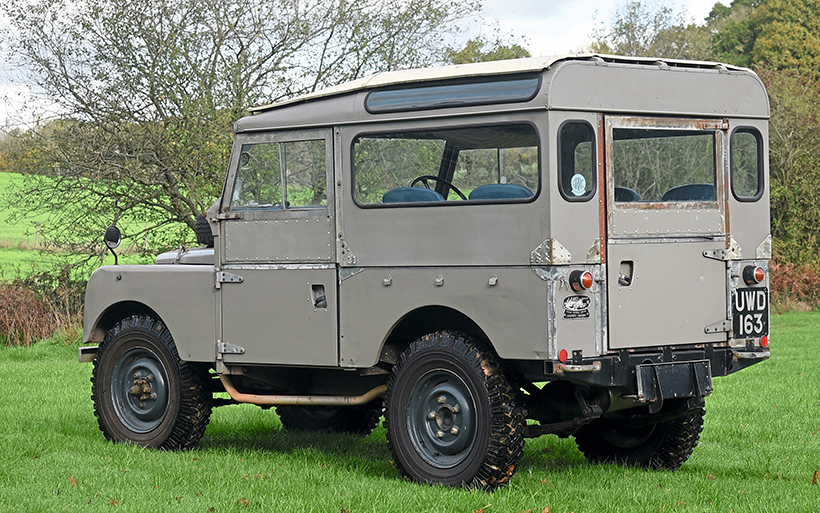
Birmabright aluminium alloy panels have helped greatly with Land-Rovers’ survival. Mike’s Land-Rovers get driven all over the country, and overseas.
The Commercial Motor was one of the first journals to review Rover’s new ‘maid-of-all-work’ in April 1948, coinciding with its launch at the Amsterdam Motor Show, and was suitably pleased by a breed of vehicle that hadn’t featured in its pages before. It wrote, ‘The Rover Co has combined the functions of a light van or a car and trailer, with those of a light tractor, thus providing a single vehicle which will meet the majority of the needs of the small farmer, or provide for the stand-by requirements of owners of larger firms. The vehicle also offers wide scope for works transport, and as a portable source of power.’
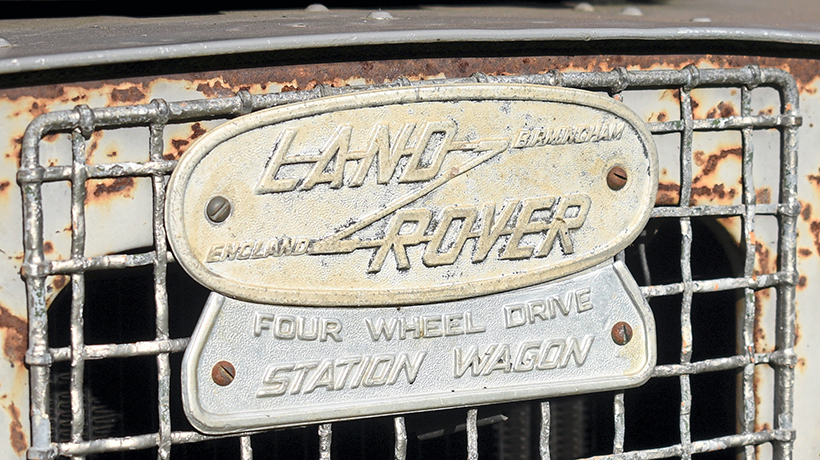
Unlike Rover’s ornate Viking mascot, the Land-Rover badge is a simple affair.
This Series I Land-Rover remained in production until 1958, after just over 200,000 had been built, when the Series II took over, growing gradually more refined during the course of its life. In late 1951, the engine was enlarged to two litres. The wheelbase grew to 86 inches in 1954, and then a long-wheelbase, 107-inch sister model joined it the following year. In 1956, the 86 grew again to 88 inches, and the last major event in the Series I’s life was the arrival of a two-litre diesel in 1957.
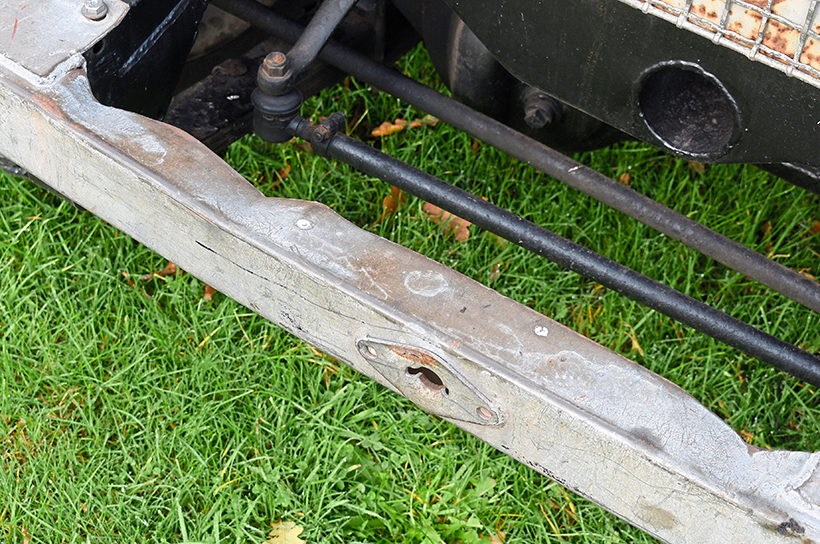
The odd knock here and there never did a Land-Rover any harm.
Before long, the Land-Rover was much more than a farmer’s utility vehicle. By calling its fully-enclosed model the Station Wagon (a strange use of an American term when surely ‘Estate Car’ would have been better understood), Rover was inviting consideration from the country set, who were still the main buyers of estate cars in the early 1950s. Besides the short- and long-wheelbase pick-ups and wagons, another catalogued model was the Fire Engine, complete with 40-gallon water tank, recommended for use in rural areas and towns with narrow streets, forests and anywhere else where manoeuvrability is paramount.

Blue 16-inch wheels attractively complement the grey bodywork.
When the 107 Station Wagon was launched in 1956, The Motor reviewed it as an ordinary family car, saying ‘Versatility, sturdiness and a total lack of decoration are the features which make the Land-Rover station wagon unique among the products of the British motor industry. It is easy to drive, tolerably comfortable and capable of 60mph in slightly favourable conditions, so that it can do the work of a normal car…

The spare wheel could be carried on the bonnet or fitted to the bulkhead behind the front seats.
‘Performance figures are best compared with those for an 8hp car of orthodox design, with substantially more acceleration from low speeds in top gear but a slightly lower maximum speed. Fuel consumption is heavier than the same engine in an orthodox car, owing to weight and wind resistance. Springing does not provide the smoothness of modern cars designed to carry less widely varying loads over surfaced roads.’

Durable galvanised steel is used for the body cappings.
Of course, no one seriously envisaged the Land-Rover as suburban commuter transport, and Rover was content to limit its marketing to ‘the countryman, the farmer and general industrial purposes’. Even then, it assumed an adventurous tone, telling prospective buyers, it was ‘The world’s most versatile vehicle. On the farm, the estate, in industry, municipal undertakings, and in numerous other undertakings where an out-of-the-ordinary job requires an out-of-the-ordinary vehicle. Over ploughed fields, and ditches, through shallow streams, on mountain paths, up steep inclines, through mud, sand or long grass, the Land-Rover takes them all in its stride.’
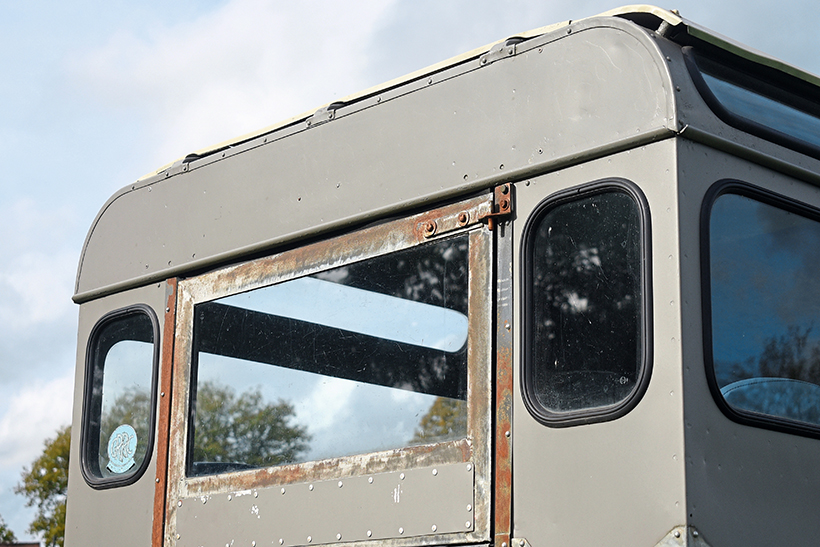
With broad windows and roof lights, rear visibility is extremely good.
By the mid-1950s, the Land-Rover had found so many applications that to detail them all would require an article in itself, but whether you were involved with colonial development, locust control, Seismograph Service or copper mine prospecting, there was a Land-Rover with your name on it. No fewer than 11 British government departments, 27 armed services around the world and 26 foreign police forces kept them in service.
Mike Rivett owns the 1956 Land-Rover 88 Station Wagon gracing these pages, but it’s just one among many in the stable he has cultivated over 35 years. One of the country’s foremost collectors of early Land-Rovers, his interest in old vehicles runs in the family. Both his father and grandfather have kept fleets of old cars, and an uncle had a preserved Sentinel steamer, but they were not Land-Rover enthusiasts.
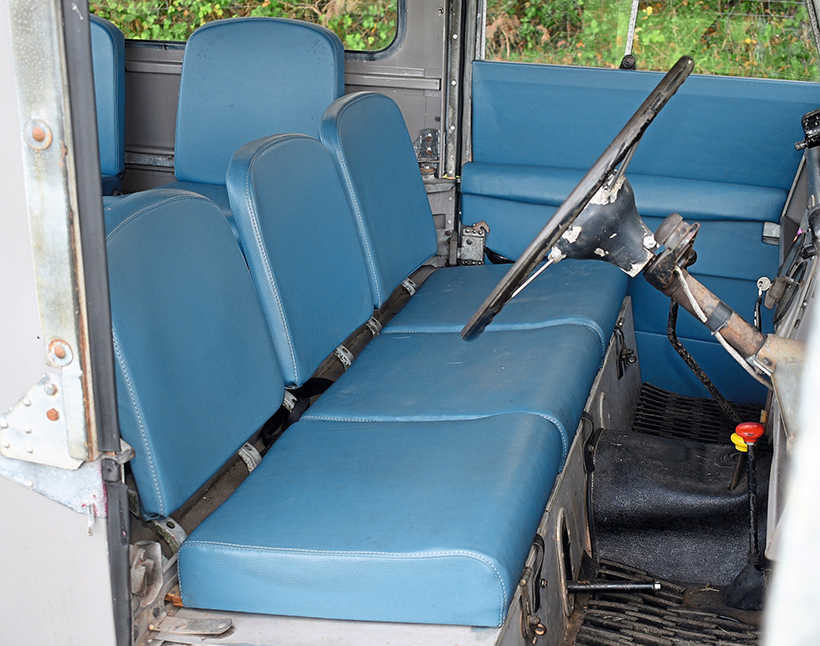
Blue Vynide makes for a comfortable, simple and attractive interior.
Having grown up in the countryside, Mike says, “I think the start was when a mate of mine had a Series I which we used to go to the pub in. I always fancied doing off-roading and green-laning and ended up with a Haflinger, which was not ideal, so I part-exchanged it for my first Land-Rover. Then I fancied an earlier one because that was a ’58. Eventually I got a ’48, but all these other ones keep coming along…”
Mike eventually ended up with pre-production prototype number 14 and couldn’t get much earlier than that, so he has simply sought some of the rarest and most unusual variants, from a Tickford station wagon to an AA service van and a fire appliance. UWD 163 has a particular claim to fame, having been retained by Land-Rover when new and used as a press vehicle.
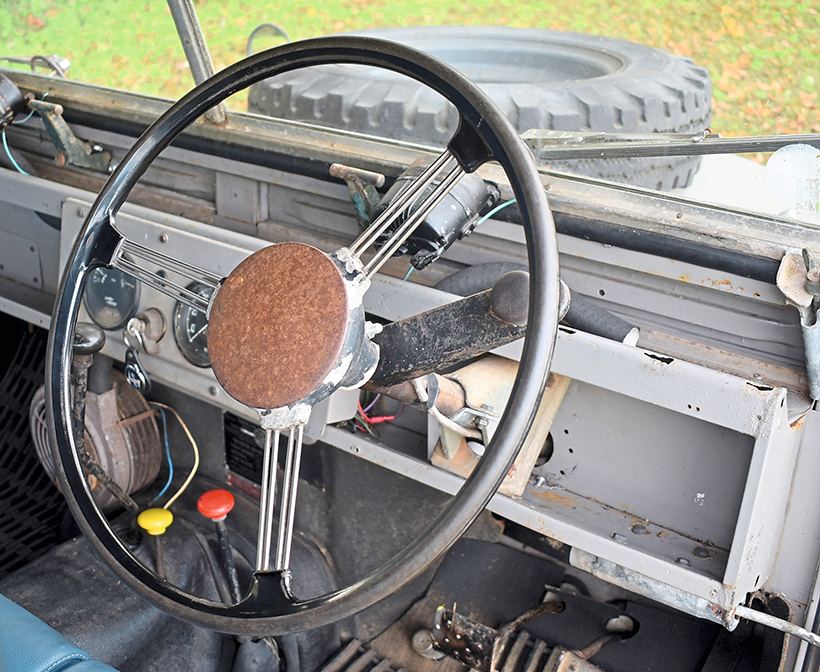
A large steering wheel ensures that the steering isn’t heavy.
When Mike bought UWD in 2017, it was in a sorry state, as he explains. “The man I bought it from was into steam engines but didn’t do anything with it. The previous owner had started restoring it and put the engine, gearbox, front wings, bulkhead and doors in a council garage, and then the council came along, cleared it and scrapped it, so I started with half a Land-Rover.
“The steam engine man had put it on eBay and I ended up buying it. I just recognised the number plate from somewhere, and it turned out it was the press launch vehicle for the 88-inch Station Wagon.”
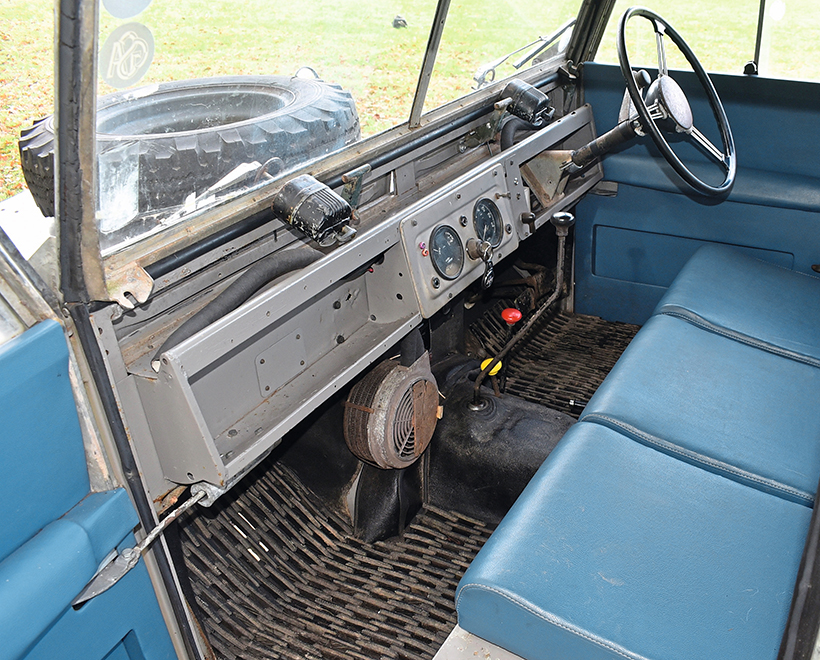
The fascia is best described as ‘functional’. Red and yellow levers are for selecting high/low range and four/rear-wheel drive.
Once in possession of UWD, Mike had the job of replacing the missing parts and putting everything together but, fortunately, what remained of the original vehicle was sound. “The chassis and axles had been done and were all nicely painted. I basically just had to find the right bits for it. I didn’t want a concours restoration, I wanted it to look like it had been done 10 years ago, and it’s worked out quite well.”
All the parts which were specific to the Station Wagon were mercifully still with the vehicle; those which had gone missing were general parts and panels which Land-Rover used across all models. “Ninety per cent of the new panels came from Australia,” Mike continues. I’ve got a friend out there and I said to him, ‘I need as much grey stuff as you’ve got.’”

What’s required besides a speedometer, fuel gauge and ammeter?
It was on the road by early 2018 and now, like all Mike’s Land-Rovers, it gets well-used. He’s taken it around to Belgium, France and the Netherlands, while in Britain it’s been shown at the Great Dorset Steam Fair and earns its keep as a taxi at the Goodwood Revival. For a while, it did a stint as Mike’s everyday transport, ferrying dogs around, until it ended up stuck behind other vehicles in his garage.
After 35 years of Land-Rover ownership, Mike says, “A later Series I like this is a lot nicer than early ones. The brakes and steering are a lot better, but it’s still a typical Land-Rover – not the quickest thing in the world and a bit of a bone-shaker.”
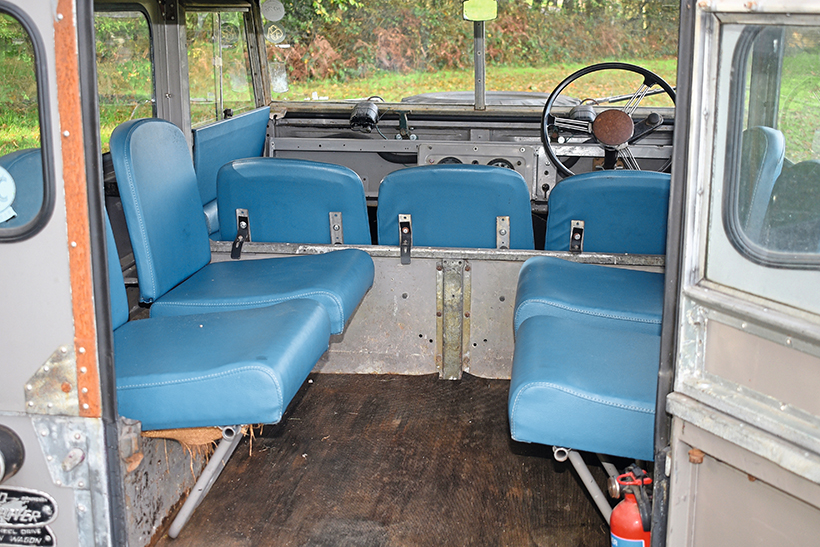
The rear seats can be folded for increased luggage space. There’s ample room for seven people in total.
Mike is obviously very modest about the qualities of his preferred transport, but he does appreciate their many capabilities. “I’ve done ploughing with them and I’ve done some serious off-roading.,” he adds. By ‘serious off-roading’, he means competitive trials with a ’48, which has been kept totally standard save for a roll-cage and some slightly more aggressive tyres.
If we think of the Land-Rover as a halfway point between a car and a tractor, we can come to the best appreciation of it. Compared to an ordinary passenger car of 1948, the Land-Rover is obviously very basic and devoid of luxuries, but when one pulls onto the road, it’s not slow by the standards of its time, and unless you’re going for a really long drive, it’s not uncomfortable either.
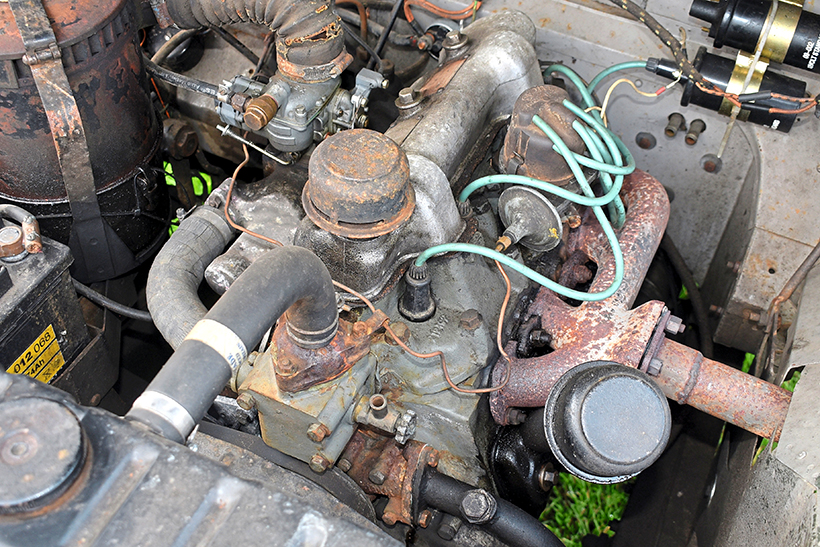
The trusty two-litre is simple, accessible and easy to work on.
With plain Vynide upholstery and rubber floor mats, it’s pleasant enough inside, and in UWD the Vynide extends to the ‘de luxe’ door trim. The optional heater is the sole concession to luxury, with the only other extras offered being strictly practical, i.e. centre- or rear-mounted power take-off pulleys for driving stationary machinery and a front bumper-mounted capstan winch for recovery and haulage.
“Generally,” Mike says, “It’s a very nice vehicle. It’s got light steering on the correct Michelin tyres, but you’re the stopping power as it’s got no servo, so the harder you push, the better you’ll stop.”
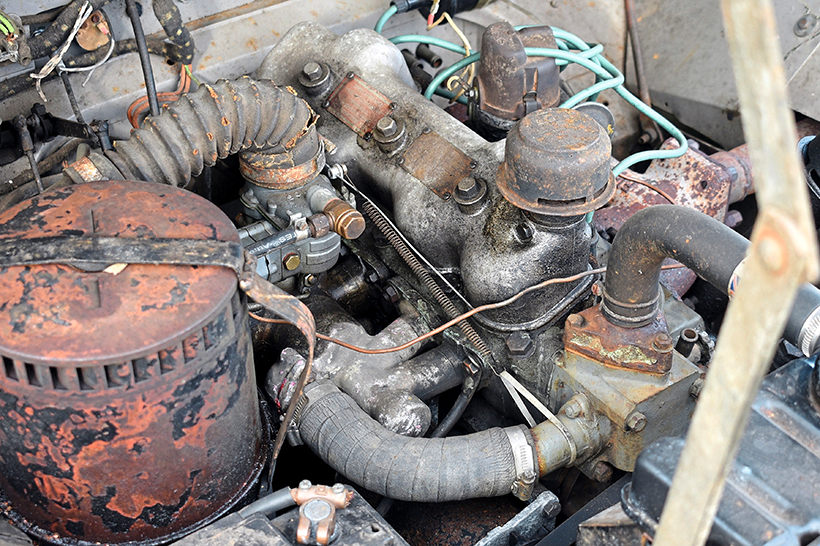
Some oily patina enhances the appearance of the engine bay.
As for tractors, Mike has the benefit of experience. “I had a grey Fergie and it’s a totally different thing. If you’ve got a farm, you need a tractor, but if you’ve got a smallholding and you need to get around, a Land-Rover will do. When we ploughed with number 14, it was a bit too quick. Tractors are more steady.”
Of course, with Land-Rovers so often being cited as Britain’s version of the Willys Jeep, it helps that Mike also owns a wartime MB, about which he says, “I prefer the Land-Rover. The Jeep’s nice and it’s lighter, but in driver-friendly terms the Land-Rover beats it hands down. It’s a lot sturdier on the ground.”
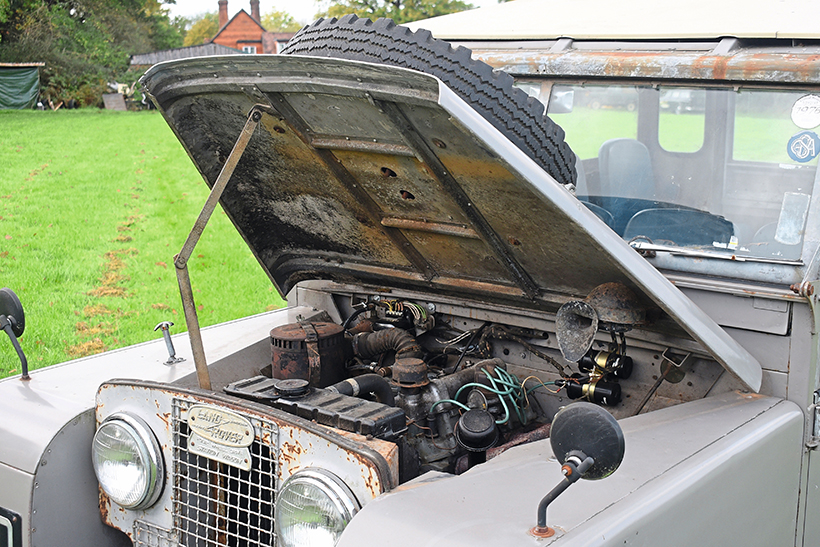
Though it may look agricultural, the Land-Rover is no slouch.
The Land-Rover might have been one of the first all-purpose four-by-fours and one of the longest lived, but is it the best? The Series I enjoyed its ten-year run largely free from competitors, but for an upstart from Longbridge, the Austin Gipsy. We’ll be having a look at that in a future article to see how it compares.

The chassis sits high on big, strong springs, and the exhaust pipe is well clear of the ground.
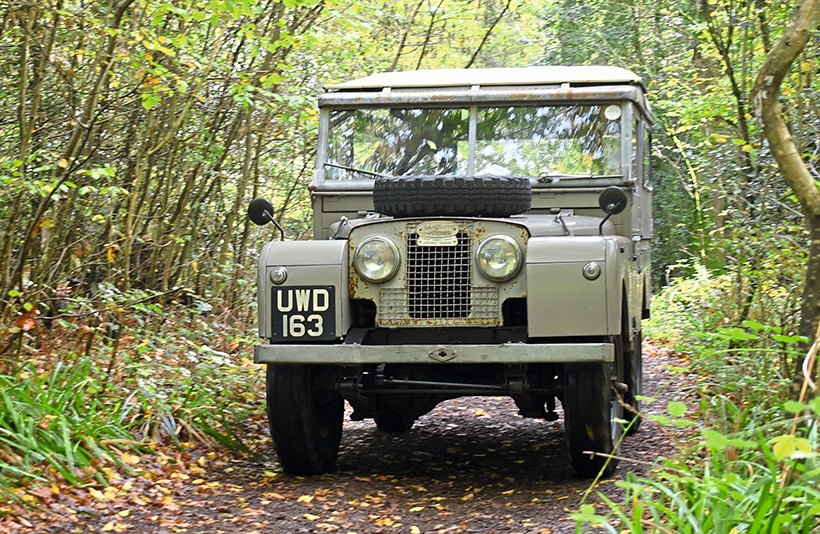
This is tame, though, compared to some of the trialling he does.
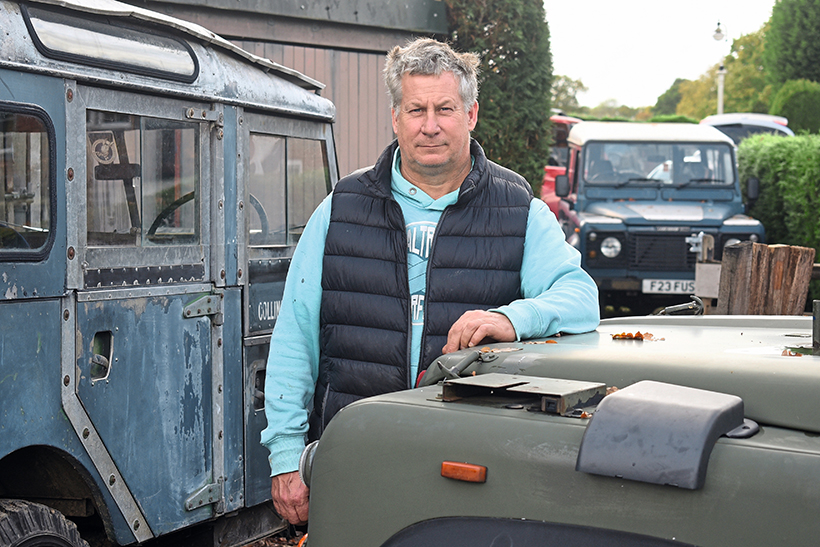
Mike where he’s most at home: surrounded by Land-Rovers.
This feature comes from the latest issue of Old Glory, and you can get a money-saving subscription to this magazine simply by clicking HERE



